#Cherokee Black Indians
Explore tagged Tumblr posts
Text
NO! You are NOT Cherokee!
History of the biggest myth in genealogy!
youtube
liars Really hate DNA and records.
#Youtube#Cherokee Freedmen#white indians#indian lies#genealogy#Freedmen#Cherokee Black Indians#Black Indians#Dawes Rolls#Dawes Act#dawes#citizenship rights#tribal lies
0 notes
Text
If the Black Seminoles were Indians, why did they speak African Creole & had African names?
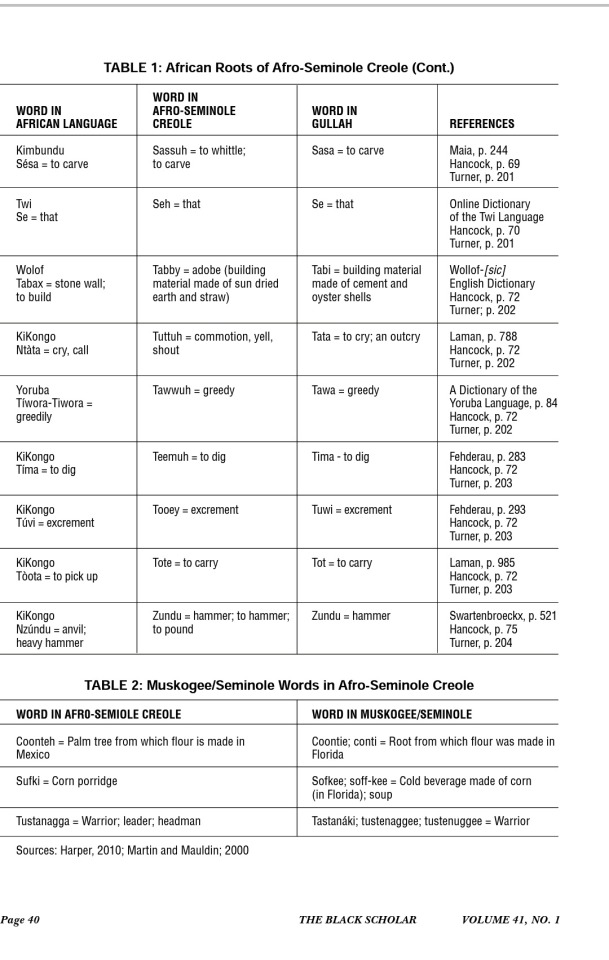
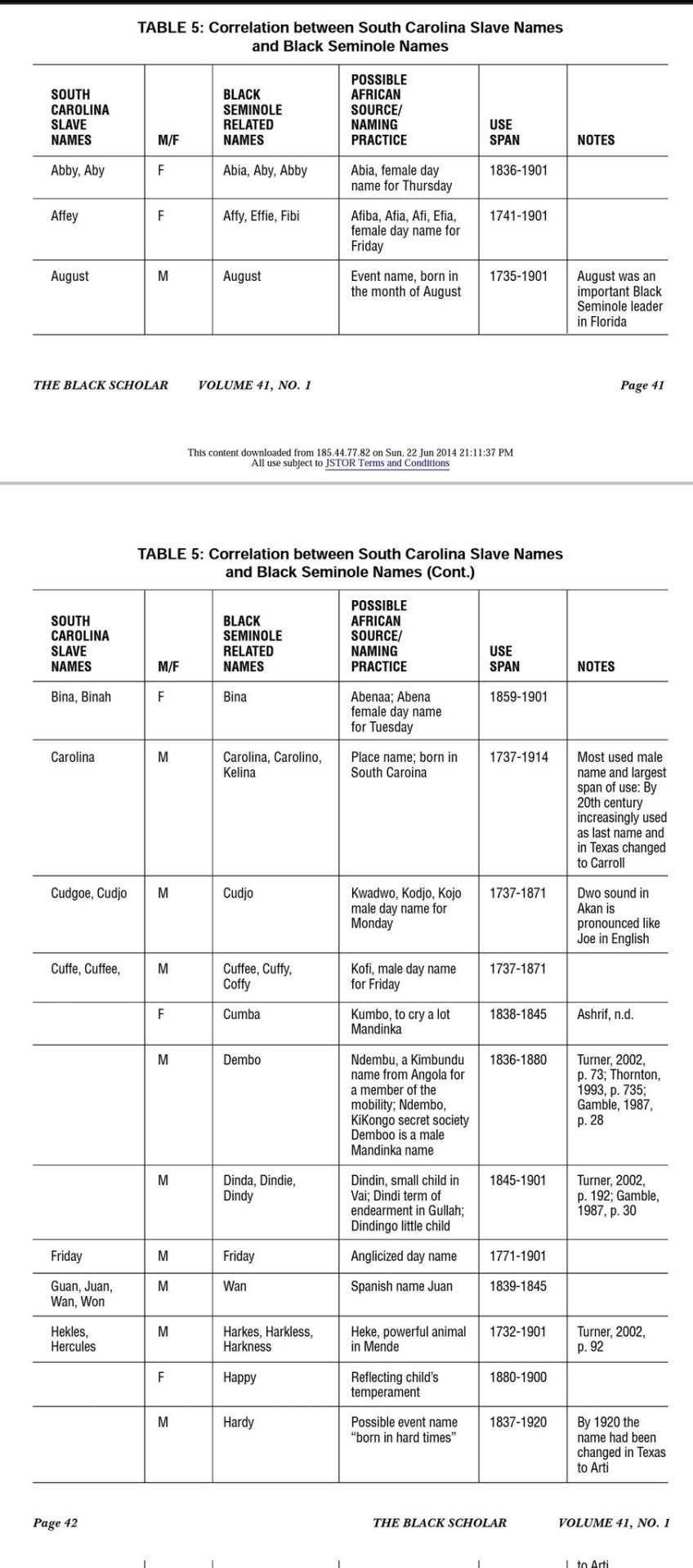
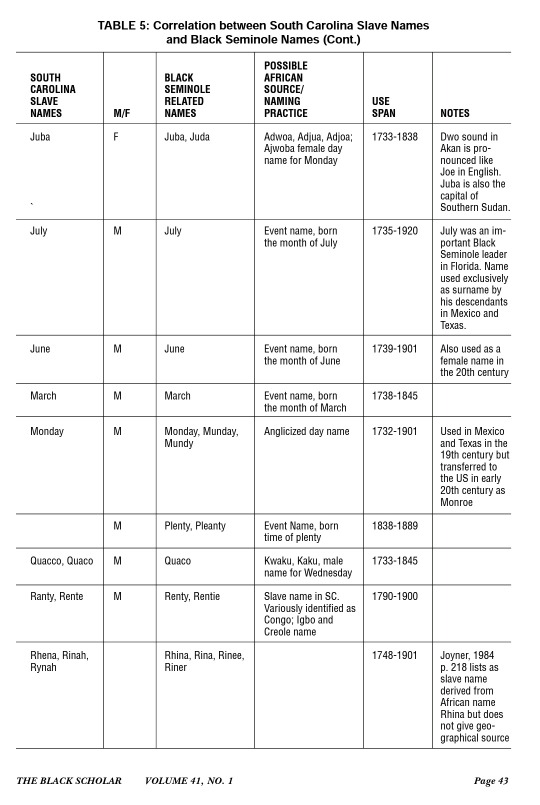
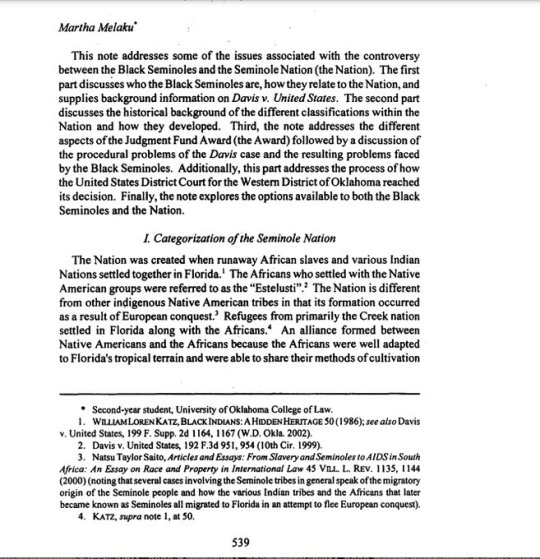
youtube
#If the Black Seminoles were Indians#why did they speak African Creole & had African names?#Africans#Freedmen#Indians#cherokees#Black Seminoles#Youtube
17 notes
·
View notes
Text
Indigenous Aid Organizations To Give To In This Shitty, Shitty Time
First Nations Development Institute: From addressing economic inequality, to preserving and uplifting native languages and arts, to fighting for land stewardship, to directly supporting COVID relief in California native tribes, they really do it all.
Native American Rights Fund: A law and advocacy network dedicated to fighting for tribal recognition, sovereignty, resource control, and human rights. In addition to court battles (local, state, and federal) they consult on issues of tribal law.
Lakota Peoples Law Project: Founders of the Lakota Child Rescue Project, they are another law and advocacy collective that fight to enforce the Indian Child Welfare Act, secure Native voting rights, and restore the sovereignty of indigenous peoples over their sacred lands such as the Black Hills and lands stolen by the Catholic Church.
Indigenous Women Rising: This grassroots mutual aid fund is open to all Indigenous peoples seeking abortion care, prenatal care, or delivery care. In addition to the direct donations, they have a bonfire store.
Quileute Move To Higher Ground: The Tribal School has been completed!!! The children of the Quileute community have a new, safe school to attend, but, tribal housing is still located within the tsunami zone. Donations now go towards construction of safe housing. I repeat: the school is BUILT. The school!!! Is!!! BUILT!!! This is objectively WONDERFUL.
American Indian Resource Center: A nonprofit focused on providing cultural events/resources and educational experiences to native children. Among other programs, they operate Camp Sevenstar, a project aimed at immersing Cherokee youth in the traditions of their culture, and the Cherokee Little Seeds Program, which aims to produce a new generation of Cherokee speakers.
#indigenous sovereignty#indigenous rights#grassroots#lakota people#cherokee#the monster speaks#quileute
377 notes
·
View notes
Text
Re: Mikus of the World
When I see Mikus from North-North America & Western Europe: "I really like this artstyle and the references the artist has managed to sneak in. Oh, and it's really nice how different artists from the same area have different conceptions of their own culture."
When I see Mikus from the global south, indigenous cultures, and other less-frequently-seen cultures of the rest of the World: "FRHGFDSEARWTG HNBVCBNTYUIREDSCPWE THIS IS THE BEST THING EVER! I PLEDGE MY SWORD TO YOU, DEAR ARTIST! Oh look at the details in the clothing! Oh look at the beauty! I wanna see her life! I wanna be her! I wanna live in that place! THis is what the internet was made for!"
In no particular order:
palestinian miku
malaysian miku
polish miku
moroccan miku
west bengal miku
tang dynasty miku
gujarati and danish mikus
nigerian miku
belarusian miku
desi miku
afghan miku
palestinian miku
guatemalan miku
irish miku
latvian miku
bengali miku
afghan miku
italian miku
kosovo miku
black american mikus
métis miku
indian miku
nigerian miku
pakistani miku
brazilian miku
turkish miku
persian miku
cherokee miku
palestinian miku
paraguayan miku
south african miku
māori miku
brazilian miku
polish miku
taiwanese miku
south sudanese miku
welsh miku
bulgarian miku
...and many more!
Yet still not enough. Keep the Mikus coming, please.
#hatsune miku#miku hatsune#miku#vocaloid#worldwide miku#mikus of the world#vocaloid miku#culture#fanart#miku fanart#original burgers
251 notes
·
View notes
Text
Reconnecting Cherokee Masterpost
I’ve had a few Cherokee posts blow up on here and as a result I’ve gotten lots of ‘my grandma said she was cherokee’ ‘I’m supposed to have Cherokee roots I wish I knew anything about it’ ‘I was never taught anything about my Cherokee ancestry’ type sentiments in my activity. So! I wanna make a little masterpost with some resources on how to verify or disprove these types of family stories and how to get started for those interested in reconnecting!
A little about me and a disclaimer. I’ve not been reconnecting that long, about a year and a half, and before that I didn’t know I was Cherokee. I did not grow up Cherokee and I am white. What I’m going to be talking about is simply resources for genealogy, language, good places to connect online, etc. these are all things I’ve dealt with as I reconnect, but I am not any sort of authority on Cherokee issues or culture. The purpose of this post is to get people who know absolutely nothing about Cherokee identity and community started in learning more and seeing what needs to be done before reconnecting. And I acknowledge that the genealogical records and resources available for Freedmen descendants and Afro-indigenous people may not be as conclusive, and I simply urge Afro-indigenous people to do what research you can. I am also only Cherokee, I can’t speak for how any of this works for other tribes. Now, to get started
I’ll be talking about
Genealogy
Enrollment
Basic info about Reconnecting
and Language
Genealogy
Genealogy is the most important first step for anyone wanting to reconnect, or even just wanting to claim Cherokee ancestry at all. Unless you have done genealogy research that has shown ancestry connecting you to ancestors on the accepted Cherokee rolls or you are or have family who are citizens of one of the 3 federally recognized Cherokee tribes, please do not make claims of Cherokee identity or ancestry.
Fake ‘granny stories’ of Cherokee ancestry are very common, particularly in the South / Appalachia. These stories often go something like ‘my great-grandmother was fullblood Cherokee. She hid out from the soldiers rounding the Cherokee up for the Trail of Tears.’ There are many many variants, such as children being adopted by a white family, being traded away, or just otherwise being left behind or abandoned. I also frequently see ‘they escaped and hid in the mountains,’ ‘they pretended to be white / black,’ etc. Remember, the Trail of Tears happened in 1838, 185 years ago. My ggg grandfather was 2, so unless you are 60+ it would be unlikely that a great grandparent was alive during that period. This mythical great-grandmother is also occasionally an ‘Indian princess.’ There are many excuses for why ancestors might not show up on known Cherokee records, such as ‘the records were burned in a courthouse fire’ or ‘they were intentionally removed from the records,’ etc. Physical features are also claimed to prove stories, such as high cheekbones, dark hair, darker skin, etc. Old family photos showing grandparents with tan skin, etc, are also brought up pretty frequently. None of those prove anything, as many people of European or mixed ancestry can have these traits. Stories like this are also not exclusive to white families, they can definitely be present in Black families as well. These stories are most often entirely fabricated or resulting from a misunderstanding. It’s pretty common to have someone be familiar with the fake stories but convinced that their family story is the one exception and has to be real, which ends up being instantly caught as fake by anyone that knows the history, you’d be surprised haha. Here is a post I’ve made talking about fake stories in more depth.
DNA testing cannot prove descent from any specific Native tribe. An ‘indigenous American’ result on a DNA test does not prove native ancestry, as DNA tests are frequently wrong especially when it comes to ‘trace ancestry’. Nor does a DNA test showing 0 native DNA prove that one doesn’t have native ancestry. DNA tests are a novelty and irrelevant to native genealogy. The only time they are useful is in finding cousins through DNA matches, which can be especially useful for adoptees. Here is a post where I go more in depth on this
Now, getting into actual genealogy, the main process with Cherokee genealogy is fairly simple. I’m not going to go in depth on the process of genealogy in general, there are plenty of resources for that. Get what info you can from your family [names, birthdates, places people lived] of your recent ancestors, then find their census records [census records from 1950 and earlier are publicly available] or what records you can, and go back, finding their parents, etc. The goal is to get around to 1900. See where they were living at that point, as that will effect what rolls they might be on. There are three main Cherokee rolls that are looked at for determining ancestry [but there are other rolls as well]
The Dawes Rolls taken between 1898 - 1914 recorded the Cherokees living in the Western Cherokee Nation, Indian Territory before Oklahoma Statehood. This roll came with allotments, parcels of land given to the Cherokees. Cherokee Freedmen are also recorded on this roll, along with Intermarried and Adopted Whites. This is the roll that CNO and UKB uses for enrollment. Here is where it can be searched.
The Baker Rolls taken between 1924 - 1929 recorded the Cherokees living on the Qualla Boundary in western North Carolina. This is the roll that the EBCI uses for enrollment
The Guion Miller Roll taken between 1906 - 1911 recorded Cherokees living anywhere and was associated with a cash payout.
I can’t find free searchable databases of the Baker or Miller rolls, but you can find them on some ancestry sites like ancestry.com with a membership or free trial. Also, be aware that these rolls all have “Declined” sections of people who applied and were declined for having no proof of ancestry, mostly just applying to try to get money or land meant for Cherokees. This is especially true of the Miller roll, where 2/3rds of the applicants were declined.
If your ancestors aren’t on any of these rolls, can be found in US census records before 1900, or aren’t living in the Cherokee homelands in the early 1800s, they are almost surely not Cherokee. Also, be wary of results on ancestry sites that start cropping up in the 1700s where the only evidence is another person’s family trees. There are many people claiming descent from Dragging Canoe, Chief Moytoy, and others that put these things on their ancestry trees when none of these people have any descendants. And people will just make up entirely fictional people. Just be sure there are actual documents tying them to the Cherokee and to your ancestors [as people will make up fake children of real figures like Nancy Ward as well]
There is a fantastic resource for Cherokee genealogy in the Cherokee Research and Genealogy Facebook group. The researchers are experts on Cherokee genealogy and will run your lines for FREE and determine conclusively whether you have Cherokee ancestry or not. When they find someone with Cherokee ancestry, they will also find your ancestors’ enrollment applications, allotment locations, etc. they’re really fantastic and I highly recommend checking them out and saving yourself the trouble of doing the research yourself. Just read their rules thoroughly. Even if you did do some research, if you hit a wall or just want confirmation, check them out! Especially if you think you found legitimate ancestry, getting them to double check will remove any doubt.
Enrollment
There are three federally-recognized Cherokee tribes. Each has their own community, resources, and different requirements for enrollment. These are: the United Keetoowah Band [UKB] located in Tahlequah, OK, the Eastern Band of Cherokee Indians [EBCI] in Cherokee, North Carolina, and the Cherokee Nation of Oklahoma [CN or CNO] in Tahlequah, OK. Each of these have distinct histories. Cherokee Nation is the largest by far.
Be wary of fraudulent state-recognized Cherokee tribes. If a Cherokee tribe is not one of the three mentioned above, then it is not recognized by the others as legitimate. These state tribes often take resources that are supposed to be going to legitimate native communities [such as school funding], spread misinformation, etc. These communities often have obviously fake non-Cherokee traits such as ‘naming ceremonies’ and members with laughably stereotypical names like ‘spirit wolf’ and ‘white owl’ lol [also, this is specifically about state tribes claiming to be Cherokee, I can’t speak to the legitimacy of other groups.]
Two of the three Cherokee tribes have a blood quantum requirement. Blood quantum [BQ] is how much ‘native blood’ one has, depicted as a fraction. BQ is a very complex topic in native communities, which I won’t get into here. EBCI has a 1/16 BQ requirement, so to be a citizen you must has 1/16 Eastern Cherokee blood, as well as have an ancestor on the Baker Roll. UKB has a 1/4 BQ requirement, so citizens must have 1/4 Cherokee blood and an ancestor on the Dawes Rolls or the 1949 UKB roll. CNO has no BQ requirement, if an ancestor is listed as By Blood on the Cherokee Dawes Rolls, or listed as a Cherokee Freedman, then you are eligible for CNO citizenship.
Do not come into Cherokee spaces just asking what sort of benefits enrollment can get you. It’s pretty disrespectful and makes it seem like you only care about what you can take from us.
Reconnection
So you did your genealogy and found that you have documented Cherokee ancestry, what next? Reconnection is a long and difficult process and I’ve barely even started, but I’ll try to give what resources and info I can.
Who can reconnect? This can vary between people, but most often I see people [biased towards Cherokees who are active online] saying that anyone with legitimate documented Cherokee ancestry can reconnect. Some people prefer reconnectors are able to enroll in one of the 3 tribes, some prefer people have connected living family, it varies a lot. In my experience as someone who is white and not a citizen yet, if you are respectful and humble, people are pretty accepting. It’s also important to think about why you want to reconnect. You need to be prepared to give back to your people as much if not more than you get. That means learning the language, the history, learn about current issues, etc. Don’t go into it just wanting to be able to say you’re Cherokee as a fun fact or get some sort of monetary benefit. It’s also important to remember that you will get asked to prove yourself. Don’t be offended if you’re asked if you’re enrolled, who your family is, how you’re Cherokee, etc. This is part of our cultural protocols. Not only do we want to keep people with fake family stories from getting into our spaces, we also just like finding relatives! You need to remember your place as a reconnecting Cherokee. Don’t think having legitimate ancestry suddenly means you’re able to talk with authority on native issues or suddenly claim to be oppressed. If you’re white, don’t suddenly start claiming to be a POC or “white-passing,” you can be white and Cherokee. Cherokee is not a race.
Consider Why you want to reconnect. I see a lot of people that want to 'reconnect' seemingly just so they can put cherokee in their bio and feel like part of a special club that can do closed practices and say they're two spirit or whatever. When you reconnect, the most important people will be the rest of the cherokee community. If you're more worried about performing to nonnatives, think long and hard about your priorities.
Reconnecting is a difficult process, especially if you are far from any Cherokee communities. You cannot reconnect alone. You aren’t reconnecting to some distant past, or to stories in a book, you are reconnecting to a living community. This can be tough for people who are far from Oklahoma or North Carolina, and there are some things that are not really possible to learn except in person. But you can still learn, and there are some online spaces. I particularly find the ᎠᏂᏣᎳᎩ ᏍᎦᏚᎩ (Cherokee Community) Facebook Group valuable. It’s kinda small, but it’s one of the best ways to engage with Cherokee community online. Sorry if you’re a Facebook hater, Facebook is going to be your best bet for actually meeting people and engaging. The Cherokee Community group requires proof of ancestry before members can join. This usually just means sending your tribal ID or your thread in the Cherokee Research and Genealogy group to an admin and they’ll let you in.
The best lesson for reconnecting is learning how to shut up and listen. I see way too many people joining cherokee groups as brand new reconnectors and immediately starting to talk and add their input on everything. You need to be able to just watch and learn and take the learning opportunities as they come instead of insisting on having someone go out of their way to teach you. So many people make fools of themselves in this groups by being loud when they have no idea what they're talking about, and insisting they get an Indian name, or wanting tattoos, or wondering if they can say they're two spirit, etc etc all when they don't seem to know anything else about our culture. You need to put work in first. Learn to read syllabary and attend the language classes, look into learning to weave or bead or whatever, get a few books by legit Cherokee authors and read them, binge some osiyo TV, etc etc. Learn what you can give before trying to see what you can take.
Here are some good basic things to check out for reconnecting
OsiyoTV
Cherokee Nation YouTube
Museum of the Cherokee People YouTube
Cherokee Stories of the Turtle Island Liars Club by Chris B Teuton, Hastings Shade, Sequoyah Guess, Sammy Still, and Woody Hansen
Cherokee Earth Dwellers by Chris B Teuton and Hastings Shade
Mooney’s Myths of the Cherokee [note: this was written by a white man in 1900 after after spending some time with the Eastern Cherokee. The history is iffy, but the stories were recorded directly from Cherokee storytellers.]
Trail of Tears: The Rise and Fall of the Cherokee Nation by John Ehle
Do your own research, but be extremely wary of Anything posted publicly online. There is lots of misinformation about Cherokee culture. Personally, I mostly do my learning in the vetted Cherokee Facebook groups, in books written by actual citizens, and by talking with connected friends. Google is rarely your friend in this case.
Language
The language is the center of our culture, it is what makes us Cherokee. It is our duty as Cherokees and as reconnecting people to learn the language. I can’t stress enough how important it is. If you aren’t putting any effort to learn the language, it shows others that you aren’t committed and you will likely have trouble getting any help reconnecting from others, it just looks bad haha. Not saying you have to be fluent overnight, I’ve been reconnecting for a year and I still am very much a beginner, ‘it doesn’t matter how slow you go, as long as you don’t stop’ as CNO language teacher Ed Fields says. Luckily, there are plenty of resources for learning online!
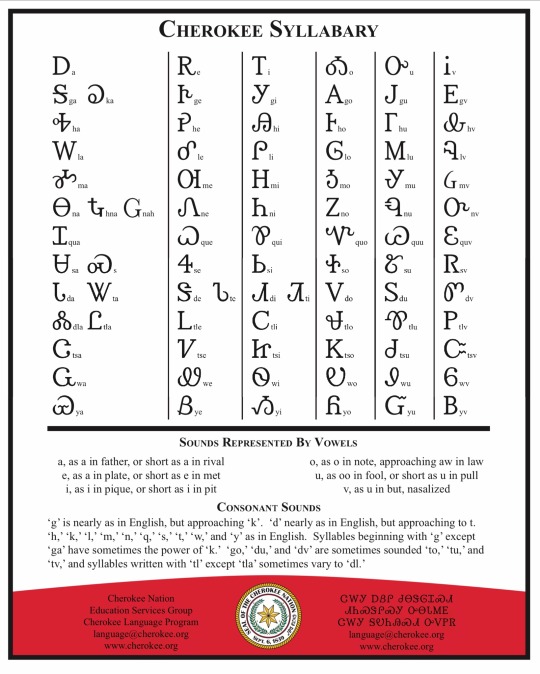
It’s good to learn the syllabary or at least familiarize yourself with it early, as it’s a good introduction to the sounds present in the language. It’s an important part of our culture and the language too. There are also many learning resources that are only in syllabary, so you’re missing out on those if you don’t know it. Here are some good resources for learning:
Simply Cherokee Syllabary by Marc W Case [HIGHLY recommended. I got reasonably confident in syllabary in like a weekend thanks to this book. You can find fairly cheap ebooks versions. It has a story for each character that makes it so easy to remember and associate the characters with their sounds.]
Learn Cherokee Syllabary app [Apple] [Android]
Syllabary fonts and keyboard
There are lots of resources for learning the language. It’s really good to hear it as often as possible when learning vs just reading it, as I’ve messing up so much in my pronunciation from just reading it and now I’m having to break habits. You preferably want to hear first language speakers. There are two main dialects of Cherokee, usually roughly split between Eastern and Western. Dialects vary a lot within those communities as well. If you still have contact with any relatives that speak Cherokee, it’s always better to learn as much as you can from them.
youtube
Cherokee Nation language department [just explore this site, they have lots of resources!]
Cherokee Learner site [explore this site too, this is a great compilation of pretty much every Cherokee language resource, eastern and western]
Online Cherokee Class with first language speaker Ed Fields
RSU Cherokee Lessons [youtube]
Mango lessons
Other apps, including the Memrise course
Online Cherokee dictionary
That’s all I can think to say right now! I’ll probably add to this later as I learn more, find more resources, and get suggestions from others. But for now, good luck, ᏩᏙ, ᏙᏓᏓᎪᎲᎢ !
#Cherokee#tsalagi#ᏣᎳᎩ#ndn#reconnecting#ndn tag#indigenous#Native American#definitely open to corrections and suggestions. please let me know if anything here is wrong or misleading
177 notes
·
View notes
Photo


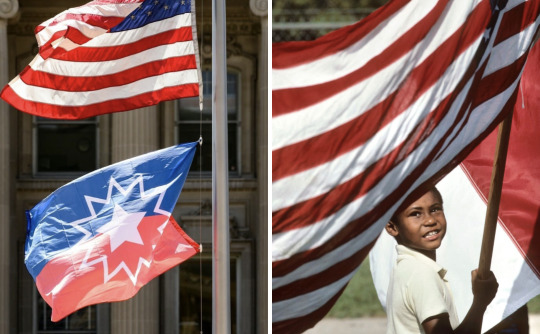


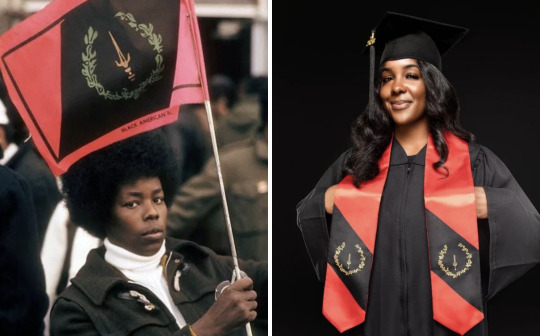
Juneteenth is a Black American holiday.
We call Juneteenth many things: Black Independence Day, Freedom Day, Emancipation Day, Jubilee Day. We celebrate and honor our ancestors.
December 31 is recognized as Watch Night or Freedom’s Eve in Black American churches because it marks the day our enslaved ancestors were awaiting news of their freedom going into 1863. On January 1, 1863, President Lincoln issued the Emancipation Proclamation. But all of the ancestors wouldn’t be freed until June 19, 1865 for those in Galveston, Texas and even January 23, 1866 for those in New Jersey (the last slave state). (It’s also worth noting that our people under the Choctaw and Chickasaw Nations wouldn’t be freed until April 28, 1866 and June 14, 1866 for those under the Cherokee Nation by way of the Treaties.)
Since 1866, Black Americans in Texas have been commemorating the emancipation of our people by way of reading the Emancipation Proclamation and coming together to have parades, free festivities, and later on pageants. Thereafter, it spread to select states as an annual day of commemoration of our people in our homeland.
Here’s a short silent video filmed during the 1925 Juneteenth celebration in Beaumont, Texas:
youtube
(It’s also worth noting that the Mascogos tribe in Coahuila, Mexico celebrate Juneteenth over there as well. Quick history lesson: A total of 305,326 Africans were shipped to the US to be enslaved alongside of American Indians who were already or would become enslaved as prisoners of war, as well as those who stayed behind refusing to leave and walk the Trail of Tears to Oklahoma. In the United States, you were either enslaved under the English territories, the Dutch, the French, the Spanish, or under the Nations of what would called the Five “Civilized” Native American Tribes: Cherokee, Creek (Muscogee), Chickasaw, Choctaw, and Seminoles. Mascogos descend from the Seminoles who escaped slavery during the Seminole Wars, or the Gullah Wars that lasted for more than 100 years if you will, and then settled at El Nacimiento in 1852.)
We largely wave our red, white and blue flags on Juneteenth. These are the only colors that represent Juneteenth. But sometimes you may see others wave our Black American Heritage flag (red, black, and gold).
Juneteenth is a day of respect. It has nothing to do with Africa, diversity, inclusion, immigration, your Pan-African flag, your cashapps, nor your commerce businesses. It is not a day of “what about” isms. It is not a day to tap into your inner colonizer and attempt to wipe out our existence. That is ethnocide and anti-Black American. If you can’t attend a Black American (centered) event that’s filled with education on the day, our music, our food and other centered activities because it’s not centered around yours…that is a you problem. Respect our day for what and whom it stands for in our homeland.
Juneteenth flag creator: “Boston Ben” Haith
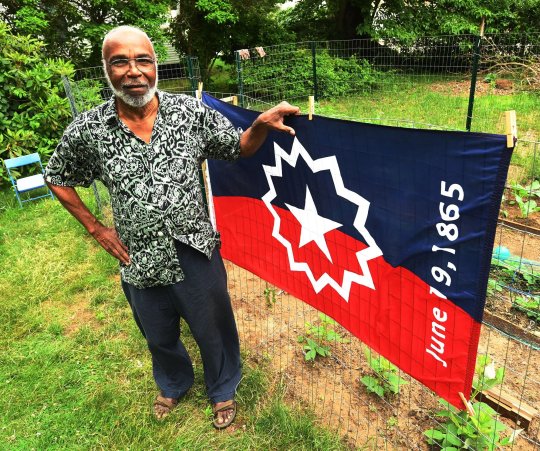
It was created in 1997. The red, white and blue colors represent the American flag. The five-point star represents the Lone State (Texas). The white burst around the star represents a nova, the beginning of a new star. The new beginning for Black Americans.
Black American Heritage Flag creators: Melvin Charles & Gleason T. Jackson

It was created in 1967, our Civil Rights era. The color black represents the ethnic pride for who we are. Red represents the blood shed for freedom, equality, justice and human dignity. Gold fig wreath represents intellect, prosperity, and peace. The sword represents the strength and authority exhibited by a Black culture that made many contributions to the world in mathematics, art, medicine, and physical science, heralding the contributions that Black Americans would make in these and other fields.
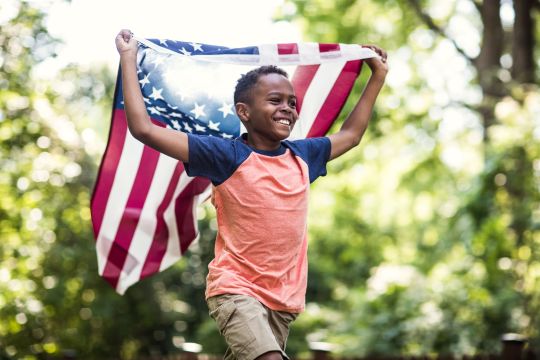
SN: While we’re talking about flags, I should note that Grace Wisher, a 13-year-old free Black girl from Baltimore helped stitched the Star Spangled flag, which would inspire the national anthem during her six years of service to Mary Pickersgill. I ain’t even gon hold you. I never looked too far into it, but she prob sewed that whole American flag her damn self. They love lying about history here until you start unearthing them old documents.
In conclusion, Juneteenth is a Black American holiday. Respect us and our ancestors.
#juneteenth#juneteenth flag#black american history#black american culture#ben haith#black american heritage flag#melvin charles#gleason t jackson#grace wisher#american flag#mascogos#juneteenth 2023
1K notes
·
View notes
Text
North Carolina Relief Masterlist
One of my close friends is currently living in North Carolina and took the time to put together this really nicely organized list of organizations currently taking donations after Hurricane Helene, and I thought it'd be nice to share it on tumblr as well since I know some folks like these kinds of organized lists! All links and descriptions come from her and her experiences with the orgs below. 👍
Foundation
The Community Foundation of WNC - Read no further if you want a catch-all, one stop donation spot for WNC long-term Helene response. CFWNC is a permanent pool of charitable capital for the 18 counties of Western North Carolina including the Qualla Boundary (land of the Eastern Band of Cherokee Indians). They are an amazing source of consistent support to many WNC nonprofits via grant opportunities. They have financially supported so many of the non-profits I have encountered or worked with. Donate to the cause of your choice via CFWNC (including the Helene response specifically) here.
Food Security, Farm Support & More
Bounty & Soul (Swannanoa Valley, Black Mountain, and Asheville) - decade-old non-profit currently typically focused on health and food insecurity now working in partnership with World Central Kitchen, MANNA, Hearts with Hands, and many others to distribute food, hot meals, and supplies. They are also working to resume purchasing and distributing fresh produce from farmers in WNC who still have crops to harvest and sell. Donate to their disaster relief here.
Annie’s Culinary Garden - I often frequent this small but mighty Black Mountain restaurant, which is closely partnered with Bounty & Soul. Annie’s was already embedded in health and food justice work pre-Helene but the last 2 weeks, Annie and her team have been working around the clock (using a generator to power their restaurant) to provide free vegan, vegetarian, and other diet-specific hot meals to retirement homes, distribution hubs, and also to feed the staff and volunteers at these hubs. This has been a huge need expressed to me by community members because much of the food available at distribution sites is not able to be eaten by those requiring special diets. Donate to their effort here.
Haywood Christian Ministry (Waynesville) - WNC’s largest food pantry has partnered with MANNA (WNC's largest food bank?) and is distributing food on the ground and requesting donations to help with the emergency disaster response. They are also directly purchasing from WNC farms to distribute fresh foods for folks cooking bulk hot meals and for families who can cook at home. For info and to donate, go here.
Food Connection(Asheville-based) - I first encountered this org at a food waste solutions summit and thought their concept was brilliant. They rescue high-quality, chef-prepared meals and deliver them to neighbors in need (often those who can’t afford to participate regularly in Asheville’s expensive foodie culture). I have since seen them out in Asheville and beyond to rural communities doing exactly what they do best and delivering delicious, no-cost hot meals to Helene victims. Donate to them here.
Foothills Food Hub (McDowell County) - McDowell was hit really hard and this hub is working to source water and shelf-stable goods to distribute. They will continue to feed vulnerable populations and to support farmers with direct purchasing and a reliable market. Requesting monetary donations, which can be made online here.
TRACTOR Food & Farms (Spruce Pine*, Mitchell County) - In another hard-hit county, this hub is also working, much like the Foothills Food Hub, on connecting local farmers with folks in a system of equitable healthy food access in rural communities. Donate to this local food hub here.
*Interesting aside: Spruce Pine and its quartz mines were extremely damaged by flooding and this threatens the global tech industry. This rural town is home to one of the world’s only sources of high-purity quartz. The mines are currently trying to re-open.
MANNA FoodBank (Asheville) - This very large organization is still doing what they do best and distributing food, water, and more, despite having their warehouse/headquarters were destroyed in the flooding along the Swannanoa River. Donate online here.
Farmer Support & Advocacy
Appalachian Sustainable Agriculture Project (ASAP) (WNC) - this wide-reaching farmer advocacy org is currently reestablishing communications with WNC farmers and getting aid to them. They also have healthy food programs that, once operating again, will serve tangentially in the relief effort. I have worked adjacent to this org for the last year and am a dogged cheerleader of them and their work. Donations can be made here.
Center for Environmental Farming Systems (Qualla Boundry and WNC) - CEFS works closely with the Eastern Band of Cherokee Indians, NC State, extension services and more to support food and farm initiatives across WNC. I previously worked adjacent to this org and was extremely impressed by their commitment and effectiveness. Donate (ideally to “Friends of CEFS” for more flexible funding) here.
Tierra Fértil Coop (Hendersonville) - social and economic farmer cooperative formed by a group of Hispanic community members living in Henderson County that grows and provides culturally-specific foods but also has community programs to support the Latinx community in Henderson county. I have attended some of their educational events and have worked adjacent to them. I am ever impressed by their work. Donate to them by emailing [email protected].
Economic Justice & More
Pisgah Legal Services (all over WNC) - these folks do just about everything “life admin” for WNC's most vulnerable populations and have done so for over forty years. They provide pro bono civil legal aid, health insurance enrollment, and more. I have worked adjacent to them over the last year and could not be more impressed by their broad scope of bi-lingual legal work that maintains incredible efficiency and effectiveness. Donate to them here.
Just Economics (WNC) - JE works on shaping the economic development of WNC in a way that benefits everyone and promotes a sustainable future. I have attended some of their workshops and found them to be powerfully educational. I am also grateful for their political advocacy for living wages for all in WNC. They are not directly working on the Helene response (as far as I know), but the road to recovery is long and their economic justice advocacy will be especially crucial as WNC rebuilds. Donate to JE here.
BeLoved (Asheville) - Org working on improving the well-being and quality of life for individuals, families, and communities through our focus areas of Home, Health, Equity, and Opportunity. On-the-ground volunteers are currently collecting and distributing a wide array of supplies and BeLoved will continue to play a significant long-term role in housing and more. Donate to BeLoved here.
Health Services & Equity
Blue Ridge Health (WNC) - Blue Ridge Health is a federally qualified health center that is continuing to provide accessible & affordable medical care and mental health care to vulnerable populations (now including Helene victims) with their sites around the region and mobile clinics. Donate here.
Vecinos (WNC) - This rapidly growing org provides direct healthcare services to underserved, uninsured communities with a focus on WNC's farmworkers at their clinics and with mobile clinics on site at farms. Donate to their continuing services here.
Asheville Buncombe Community Christian Ministry (Asheville based) - The ABCCM helps run and provide shelter in Asheville and is partnered with the Red Cross. Donations help pay for motel and food vouchers for local residents and long-term support for those displaced. A personal aside: ABCCM also has an awesome medical clinic serving uninsured folks and they were the only medical service I could find that would treat a tick born illness that I had when I first arrived in the US from Canada (I did not yet have health insurance). To donate to their Helene response, go here.
Schools & Youth
FernLeaf Community Charter School (Fletcher) - FernLeaf was partially destroyed by Helene (one of the school buildings was entirely lifted off of its foundation then dropped several feet away in a truly remarkable display of the power of water from a small nearby creek). Donate to FernLeaf here.
United Way of Asheville and Buncombe County - The local United Way typically works on youth/child food security, educational support, and physical and mental health care services. The org is helping with immediate natural disaster response and long-term support for flood victims. Donations can be made online here.
Other
Blue Ridge Public Radio - obviously these NPR folks have been working around the clock to keep people informed in the old-fashioned way, over the airwaves. You can support them here.
#since this was sent in an email I've edited it slightly to avoid sharing any personal info but otherwise this is unchanged!#there's no shortage of disaster relief cases going right now but wanted to share for reference if nothing else#disaster relief#north carolina#hurricane helene#hurricane relief#donations#signal boost
93 notes
·
View notes
Text
Riordanverse race/nationality headcanons (Main characters and background characters alike)
This may be a very long post, and I’m throwing in little tidbits about appearances, so with no regard to any particular order, strap in:
(Seriously, this is a huge post)
Edit: Changed Luke from just Korean American to mixed Argentinian/Korean American, inspired by @tagthescullion
The Seven (Including Nico and Reyna):
Percy Jackson: Biracial White/Latino, Cuban American (Sally was born in Havana, she had Percy shortly after moving to the US)
Annabeth Chase: Biracial Black/White, Irish/African American (with Swedish, Ghanaian and Polish descent)
Jason (And Thalia, by extension) Grace: White German American (Beryl moved from Germany to the US)
Piper McLean: Native American, Cherokee
Leo Valdez: Latino, Mexican, Born in Texas
Hazel Levesque: Black, African American, New Orleans (1940's French Creole)
Frank Zhang: Chinese Canadian, Vancouver
Nico Di Angelo: White, Italian with Russian descent, 1920’s Venice
Reyna Avila Ramirez Arellano: Latina, Puerto Rican
Camp Half Blood:
Will Solace: Biracial White/Bangladeshi American, Texas
Luke Castellan: Mixed Argentinian/Korean American (Born in the US, May (or Mi-Hee) grew up in a Argentine Korean community in Buenos Aires before she moved to the US and met Hermes)
Malcolm Pace: White with albinism, Scottish, Glasgow
Travis and Connor Stoll: Mixed Scottish and Laotian, Edinburgh (Source: @freddie-77-ao3)(I think in the TV show, they cast two Asian boys as the Stolls, so I've made them Asian)
Alice Miyazawa: Japanese American, Los Angeles
Julia Feingold: White Luxembourger, Luxembourg City
Cecil Markowitz: White Austrian/Northern Irish (Born in Graz, grew up in Belfast since he was two, has dual citizenship)
Katie Gardener: White Scottish, Aberfoyle
Castor and Pollux Vintner: Black, Irish (Pollux is Albino, Castor wasn’t), Donegal
Michael Yew: Mixed Irish and Chinese, Limerick (Granny moved from China)
Lee Fletcher: White Irish, Donegal
Clarisse La Rue: Mixed French/Pakistani American, Arizona (Mother moved from France)
Chris Rodriguez: Afro-Latino, Nicaraguan (Moved to the states when he was seven, lived in the same neighbourhood as Clarisse)
Silena Beauregard: Blasian, African American and Filipino, Mississippi (French descent)
Charles Beckendorf: Black, African American
Jake Mason: White American, Wyoming
Harley Smythe-Davidson: Biracial White/Aboriginal Australian (Source: @freddie-77-ao3)
Nyssa Barrera: Latina, Panamanian, Panama City
Shane O’Doherty: White Irish, Laois
Christopher Chalkevas: White Greek/English (Born in Larissa, moved with his mother to Hackney, London at age five, has dual citizenship)
Clovis Karlsen: Wasian, Welsh (Welsh/Norwegian grandad, Indonesian granny, Source: @ashthenerdtheythem)
Chiara Benvenuti: White Italian, Florence
Alabaster C. Torrington: British Indian, English, Westminster
Lou Ellen Blackstone: Black with vitiligo, British Ghanaian, Birmingham
Drew Tanaka: Japanese American, New York City
Valentina Diaz: Latina, Colombia
Mitchell Singh-Donovan: Mixed Indian and Irish, Cork
Lacy Alfsen: White Danish, Copenhagen
Ethan Nakamura: Japanese, Tokyo
Damien White: White Irish, Northside Dublin
Miranda Gardiner: Vietnamese American, Massachusetts (Distant Irish ancestry)
Billie Ng: Wasian, Irish/Thai Canadian, Toronto (She grew up in Longford till she was seven, then she and her mortal dad moved to Canada)
Sherman Yang: Chinese American, Alaska
Marcus (Mark) Dooley-Wallace: White Irish American, Georgia
Ellis Wakefield: Black, Algerian
Holly and Laurel Victor: Sri Lankan American, Seattle
Meg McCaffery: Wasian, Irish/Vietnamese American
Camp Jupiter:
Dakota Cheshire: Black, Bermudian
Gwendolyn Nunez: Hispanic, Spanish American
Bobby Herrera: Latin American, New Mexico
Lavinia Asimov: White Russian, born in San Francisco
Larry Schumacher: White American, North Carolina
Leila Grunfeld: White American, Colorado
This has been a very exhausting post to make lmao. I gave some of the characters who don’t have canonical surnames my own Hcs for their surnames. Also, I am yet to read through trials of Apollo, so maybe I’ll come later back to add more Roman names to the list.
Tagging my moots that I like to see their opinions for this (as well as the ones I tagged within the list as well):
@aki-bara @ravingcoffeeaddict @ebony-reine-vibes @squiggle3worm @sleep-needer
#percy jackson#annabeth chase#jason grace#piper mclean#leo valdez#hazel levesque#frank zhang#nico di angelo#reyna avila ramirez arellano#will solace#luke castellan#malcolm pace#travis and connor stoll#alice miyazawa#julia feingold#cecil markowitz#katie gardner#castor and pollux#michael yew#lee fletcher#clarisse la rue#chris rodriguez#damien white#silena beauregard#charles beckendorf#pjo#hoo#toa#riordanverse#misc skeptic thoughts
135 notes
·
View notes
Text
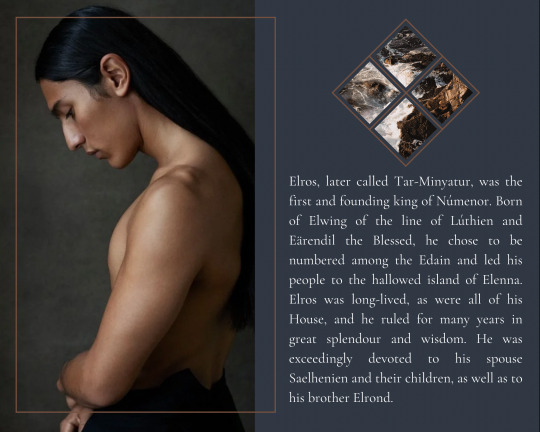
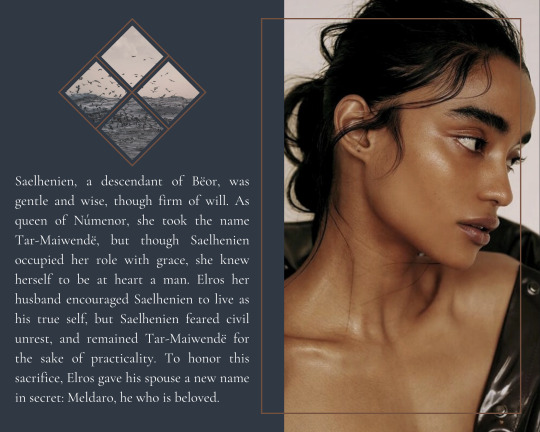
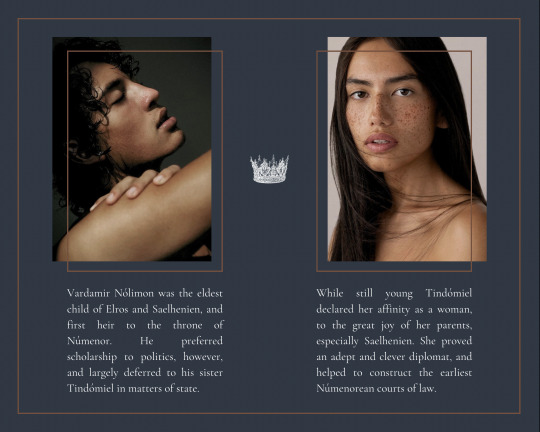
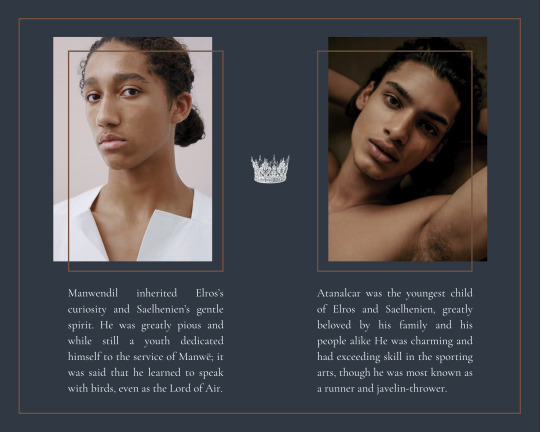
"But to Elros, who chose to be a king of Men, still a great span of years was allotted, many times that of the Men of Middle-earth; and all his line, the kings and lords of the royal house, had long life even according to the measure of the Númenóreans. But Elros lived five hundred years, and ruled the Númenóreans four hundred years and ten." - J.R.R. Tolkien, The Silmarillion, "Akallabêth"
@halfelvenweek day 3 ⇢ heritage + númenoreans || THE LINE OF ELROS
[ID: four graphics in shades of brown and desaturated dark blue.
1: A large image of Cherokee Jack framed by a brown rectangle covers the left side of the graphic. He is an aniyunwiya model with light brown skin and long, straight, dark brown hair. He is shown in profile, facing left and looking slightly down. The right side of the graphic shows a diamond-shaped image of ocean surf and rocks, divided into four sections and framed in brown. Below that, white serif text reads "Elros, later called Tar-Minyatur, was the first and founding king of Númenor. Born of Elwing of the line of Lúthien and Eärendil the Blessed, he chose to be numbered among the Edain and led his people to the hallowed island of Elenna. Elros was long-lived, as were all of his House, and he ruled for many years in great splendour and wisdom. He was exceedingly devoted to his spouse Saelhenien and their children, as well as to his brother Elrond."
2: Same format as Image 1, but the sides are switched. The large image shows indian model Shonali Singh. She has brown skin and black hair tied back in a bun, and is looking to the side. The small image shows birds flying over the ocean, and the text below it reads "Saelhenien, a descendant of Bëor, was gentle and wise, though firm of will. As queen of Númenor, she took the name Tar-Maiwendë, but though Saelhenien occupied her role with grace, she knew herself to be at heart a man. Elros her husband encouraged Saelhenien to live as his true self, but Saelhenien feared civil unrest, and remained Tar-Maiwendë for the sake of practicality. To honor this sacrifice, Elros gave his spouse a new name in secret: Meldaro, he who is beloved."
3: The whole graphic is framed in brown, and contains two smaller rectangular images each with their own frame. The image on the right side shows Reef Titcomb, a young man with brown skin and dark curly hair, facing to the side with his eyes closed and head lifted. White text below the image reads "Vardamir Nólimon was the eldest child of Elros and Saelhenien, and first heir to the throne of Númenor. He preferred scholarship to politics, however, and largely deferred to his sister Tindómiel in matters of state." The second image shows Logan Alcosiba, a native hawaiian/filipino/mixed european model with freckled brown skin and straight dark hair. She is looking at the viewer intently, turned slightly to one side. Text below the image reads "While still young Tindómiel declared her affinity as a woman, to the great joy of her parents, especially Saelhenien. She proved an adept and clever diplomat, and helped to construct the earliest Númenorean courts of law." Between the two pictures is a small drawing of a white crown.
4: Same format as Image 3, but this time the first image shows Josh Armstrong, a young man with brown skin and dark brown curly hair tied back in a bun. He is wearing a white shirt and looking at the viewer with a thoughtful expression. Text below the image reads "Manwendil inherited Elros’s curiosity and Saelhenien’s gentle spirit. He was greatly pious and while still a youth dedicated himself to the service of Manwë; it was said that he learned to speak with birds, even as the Lord of Air." The second picture shows Mase Somanlall, a guyanese/canadian model with brown skin and wavy dark hair. He is leaning back with his arms folded behind his head, looking up at the viewer. Text reads "Atanalcar was the youngest child of Elros and Saelhenien, greatly beloved by his family and his people alike He was charming and had exceeding skill in the sporting arts, though he was most known as a runner and javelin-thrower." //End ID]
#halfelvenweek#elros#elros's wife#vardamir#vardamir nólimon#tindómiel#manwendil#atanalcar#textual ghosts#line of elros#númenor#the silmarillion#akallabêth#mepoc#peredhel#tolkienedit#silmedit#oneringnet#tolkiensource#sourcetolkien#fantasyedit#litedit#brought to you by me#edits with the wild hunt#the professor's world#graphics#described#fc: cherokee jack#fc: shonali singh#fc: reef titcomb
37 notes
·
View notes
Text
Freedmen Series: Cherokee Freedmen Genealogy Resources
youtube
#Youtube#Dawes#Dawes Act#Dawes Rolls#Cherokee Freedmen#Chickasaw Freedmen#Freedmen#Native American Freedmen#Citizenship#Native Citizenship Genealogy#Black Indians
4 notes
·
View notes
Text
I don't think white people realize how recently interracial marriage was not allowed, and how long prejudice against it continued (or continues)
canada has never specifically had legal bans on interracial marriage, but the KKK would proselytize against interracial marriage:
Unlike the United States, Canada had no blatant laws banning interracial marriage. But while the stigma was more informal in this country, it could be just as terrifying. As Backhouse describes in her 1999 book, Colour-Coded: A Legal History of Racism in Canada, 1900-1950, much of this terror was at the hands of the Ku Klux Klan. In 1927, Klansmen congregated in Moose Jaw, where they burned a 60-foot cross and lectured a large crowd on the risks of mixed-race marriage.
They would also kidnap people to prevent said marriages:
Three years later, on Feb. 28, 1930, some 75 Ku Klux Klan men dressed in white hoods and gowns marched into Oakville, Ont., and burned another massive wooden cross. They had arrived to intimidate Isabel Jones, a white woman, and her fiancé, Ira Junius Johnson, a man presumed to be black but later found to be of mixed Cherokee and white descent. The woman's mother had summoned the KKK to separate them.
The Klansmen kidnapped Jones, 21, and dumped her off at the Salvation Army, where they would keep surveillance on her for days from a car parked outside. In front of the couple's home, they burned a cross and threatened Johnson. During the invasion, the police chief recognized many of the Klansmen as prominent business owners from Hamilton as they plucked off their hoods to shake his hand.
This continued into the late 30s and the 40s, and often involved law enforcement:
Four months pregnant and eating breakfast with her fiancé in their pyjamas at their Toronto home, 18-year-old Velma Demerson was confronted by her father and two police officers. Demerson's father had sicced the cops on his daughter for what was scandalous behaviour at the time: Demerson, a white, unmarried woman, was living with a Chinese man, Harry Yip, and was carrying his child. Under the Female Refuges Act, Demerson was deemed "incorrigible and unmanageable" and incarcerated for nine months at Toronto's Andrew Mercer Reformatory for Women, where she was locked in a seven-foot-by-four-foot cell.
source for all
This was all within my grandparents' lifetimes. And the harassment and KKK and police involvement continued well into the 60s and 70s.
And there was the extremely confusing system of whether or not Indigenous people lost their "Indian status" based on who they married, which was all based on gender and blood quantums. This was under the Indian act, and you can read about the marriage discrimination in it here.
And it never really ended, not socially.
My parents got together as an interracial couple in the 80s. My mom's aunt (that's the white side of the family) refused to attend their wedding. In the 90s they got pulled over by a cop who asked if my dad was keeping my mom in his car against her will.
Just a few months ago a white woman refused to believe that my mom is my mom, because that would mean my mom fucked a brown person and that couldn't be right! My mom is so pretty, surely she didn't have to settle for a brown immigrant!
I know this post is long but I think that you should read this. I see people crack jokes about interracial marriage a lot, but I doubt many Canadians know its history on this land.
279 notes
·
View notes
Text
Lessons in Manliness from Bass Reeves _________________
It’s Never Too Late for a Man to Have a Second Act
Bass Reeves was born a slave in Arkansas in 1838. When the Civil War broke out, his white master joined the Confederate Army and took Reeves along to serve as his body servant. Reeves bided his time, until one night he saw an opening, laid out his master with his mighty fists, and took off for the hills a free man. He was taken in by the Keetoowah, an abolitionist sect of the Cherokee Nation.
When the war was over, he struck out on his own and settled with his family in Van Buren, Arkansas, making a good living as a farmer and horse breeder. He was the first black man to settle in Van Buren, and he built his family an eight room house with his own hands.
He started making some extra money by helping the U.S. Marshals with scouting and tracking and soon earned a reputation for himself as a man who knew what he was doing and could be relied upon.
He was commissioned as a Deputy U.S. Marshal in his own right in 1875, when he was 38 years old. During this time marshals were paid for the number of criminals brought in and the distance traveled in capturing them and bringing them back to court. With so many miles to cover in Indian Territory, and with his legendary effectiveness for tracking down wrong-doers, Reeves made a great living at his job. And so it was only as he was nearing 40 that he found his true calling.
Compensate for Weaknesses by Cultivating Signature Strengths
“My mom always said she heard that Bass was so tough he could spit on a brick and bust it in two!” -Willabelle Shultz, granddaughter of fellow marshal
Because he grew up a slave, Bass Reeves did not know how to read or write. Being an illiterate U.S. Marshal was highly unusual—the men needed to fill out forms and reports–but Bass got and kept his job by compensating for this weakness with other valuable strengths.
First, he could speak the Muskogee language of the Creeks and Seminoles, and he could also converse pretty well in the languages of the other Five Civilized Tribes. He took the time to get to know the tribes and their customs, and they respected him for it. His friendly and sterling reputation among Indians, blacks, and whites alike led folks to trust him and give him assistance and tips they didn’t feel comfortable sharing with other marshals.
Reeves knew Indian Territory like the back of his hand, and his scouting and tracking skills were second to none.
But his most notable strength was his prowess with firearms. He carried two big .45 caliber six-shooters and wore them with their handles facing forward. He employed the cross-handed draw, as he believed it was the fastest way for a man to grab his guns. And indeed, he was known as a man who could draw with lightning fast speed; numerous men tried to beat him, and 14 of them died in the attempt.
But unlike what you see in movies, cowboys in the West did not rely on their pistols; those were their back-up firearms. A cowboy’s weapon of choice was his trusty Winchester rifle, and that was the gun Reeves used most. But he was a proficient marksman with both weapons. Ambidextrous and always cool under pressure, Reeves could fire an accurate shot with pistol or rifle, with his left hand or his right. It was said he could draw “a bead as fine as a spider’s web on a frosty morning” and “shoot the left hind leg off of a contended fly sitting on a mule’s ear at a hundred yards and never ruffle a hair.”
Turkey shoot competitions were popular at territorial fairs and picnics, but Reeves was banned from entering them because he was too darn good. Once, when he saw 6 wolves tearing at a steer, he took them all out with just 8 shots from the back of a galloping horse.
The Mind Is Just as Powerful a Weapon as the Gun
“If Reeves were fictional, he would be a combination of Sherlock Holmes, Superman, and the Lone Ranger.” -Historian Art Burton
Despite Bass’ legendary strength and prowess with firearms, he didn’t simply go after criminals with guns and fists blazing. Rather, he took a far slower, methodical, and ultimately more effective approach. He was an intuitive and quick-thinking detective who often got his man from being smart and crafty.
Reeves was a master of disguise, a tactic he used to sneak up on unsuspecting outlaws. They would undoubtedly see a giant black man on a giant horse coming for them, so when Bass was closing in on a man, he would switch to a smaller ride, and he learned tricks from the Indians on how to look smaller in the saddle.
And often he would ditch the horse all together. For example, one time he dressed like a farmer and lumbered along in a ramshackle wagon pulled by old oxen. He drove the wagon close to a cabin where six outlaws where holed up, and as he passed their hide out, he pretended to get the wagon snagged on a large tree stump. When the outlaws came out to help this humble farmer, he coolly reached into his overalls, drew out his six-shooters, and placed the men under arrest.
On another occasion, Reeves was after two outlaws who were hiding out at their mother’s house. Reeves camped 28 miles away to be sure they didn’t see him coming or hear he was in the area. Then he ditched his marshal duds and stashed his handcuffs and six-shooters under a set of dirty, baggy clothes, flat shoes, and a large floppy hat into which he shot three bullet holes. Dressed like a typical tramp, Reeves sauntered up to the felons’ hideout and asked for something to eat, showing them his bullet-ridden hat and explaining how he had been shot at by marshals and was famished from having walked for miles to flee the law. Having ingratiated himself as a fellow outlaw, the men ate together and decided to join forces on a future heist. After everyone had fallen asleep for the night, Reeves crept up to the two outlaws and handcuffed them in their sleep, careful not to wake them. In the morning, Reeves bounded into the room and woke them up with his booming voice, “Come on, boys, let’s get going from here!” As the men tried to get out bed, they quickly realized they’d been had by crafty old Bass Reeves.
Be Reliable–The Details Matter
Even though he was a tough-as-nails badass, locals also remembered Reeves as a man known for his “politeness and courteous manner” and as someone who was “kind,” “sympathetic,” and “always neatly dressed.” He was also a man who took pride in getting the details right.
Reeves was unable to read or write and yet part of his job was to write up reports on his arrests and serve subpoenas to witnesses. So when he had to write a report, he would dictate to someone else and sign with an “X.” When he would get a stack of subpoenas to serve to different people, he would memorize the names like symbols and have people read the subpoenas out loud to him until he memorized what symbol went with what subpoena.
He took great pride in the fact that he never once served the wrong subpoena to the wrong person. In fact, many of the courts specially requested that their subpoenas be served by Reeves because he was so reliable.
Keep Cool. Always.
“Reeves was never known to show the slightest excitement under any circumstance. He does not know what fear is. Place a warrant for arrest in his hands and no circumstance can cause him to deviate. ” –Oklahoma City Weekly Times-Journal, 1907
Bass Reeves had an uncanny ability to stay calm and cool, even when he was in a really tight spot.
He found himself in that kind of tight spot while looking to arrest a murderer, Jim Webb, who was hanging out with posseman Floyd Smith at a ranch house. Reeves and his partner moseyed up, tried to pull the old, “we’re just regular cowboys passing through” trick, and sat down to get some breakfast. But the two men weren’t buying it and sat glaring at the marshals, pistols at the ready in their hands. An hour went by and Reeves and his partner still didn’t have an opening to make a move on the outlaws. But when Webb was momentarily distracted by a noise outside, Reeves jumped up, wrapped his large hand around Webb’s throat, and shoved his Colt .45 in the surprised man’s face. Webb meekly surrendered. Reeves’ partner was supposed to jump in and grab Smith, but he froze. Smith fired two shots at Reeves; he dodged them both, and with his hand still around Webb’s neck, he turned and took Smith out with one shot. Then he ordered his partner to handcuff Webb and called it a day.
Reeves was the target of numerous assassination attempts but he often saved his own neck by staying completely calm and in control. One time, he met two men out riding who knew who he was and wanted him dead. They drew their guns and forced him off his horse. One of the men asked if Reeves had any last words, and Bass answered that he would really appreciate it if one of them could read him a letter from his wife before finishing him off. He reached into his saddlebag for the letter and handed it over. As soon as the would-be-assassin reached for the letter, Bass put one of his hands around the man’s throat, used his other hand to draw his gun, and said, “Son of a bitch, now you’re under arrest!” The outlaw’s partner was so surprised he dropped his gun, and Reeves put both men in chains.
Another time, Reeves faced a similar situation; this time three wanted outlaws forced him from his horse and were about to do him in. He showed them the warrants he had for their arrest and asked them for the date, so he could jot it down for his records when he turned the men into jail. The leader of the group laughed and said,“You are ready to turn in now.” But having dropped his guard for just a second, Reeves drew his six-shooter as fast as lightning and grabbed the barrel of the man’s gun. The outlaw fired three times, but Reeves again dodged the bullets. At the same time, and with his hand still around the barrel of the first man’s gun, he shot the second man, and then hit the third man over the head with his six-shooter, killing him. All in a day’s work for Deputy U.S. Marshal Bass Reeves.
Build a Bridge
When Reeves was appointed a marshal by Judge Parker, the judge reminded him that “he would be in a position to serve as a deputy to show the lawful as well as the lawless that a black man was the equal of any other law enforcement officer on the frontier.”
Bass took this responsibility seriously.
Black law enforcement officers were a rarity in other parts of the country, but more common in Indian Territory and surrounding states like Texas. In fact, despite Hollywood’s depiction of the Old West as lily white, 25% of cowboys in Texas were African-American.
Because of the reputation Bass earned as a marshal who was honest, effective, and doggedly persistent–the Chief Deputy U.S. Marshal of the Western District, Bud Ledbetter, called Bass, “one of the bravest men this country has ever known”–more black marshals were hired in Indian Territory; a couple dozen were part of the service during Bass’ tenure. Nowhere else in the country could a black man arrest a white man. Bass had paved the way, and done one of the manliest things a man can do—build a bridge and a legacy for others to follow.
Sadly, when Oklahoma became a state in 1907, it instituted Jim Crow laws that forced black marshals out of the service. Despite his legendary record as a deputy marshal, Reeves had to take a job as a municipal policeman in the town of Muskogee the year before he died. But his shining example of manhood cannot so easily be passed over and still speaks to us today.
28 notes
·
View notes
Text
this is just random, and full appearance posts are coming out soon but race/nationality hc (and maybe yalls input on a couple bc i'm not sure how i'm shaping backstory yet)
percy: mixed, white and latino (brazil)
annabeth: white (norse/virginia heritage)
thalia and jason: white (scottish)
nico: white (italian)
meg: undecided, input welcome
leo: latino (mexican)
will: white (texan)
clarisse: white, (arizona, but mother from france)
piper: native, (cherokee)
travis and connor: white (scottish)
cecil: white (scottish)
katie: white (nationality undecided, input welcome)
clovis: white, welsh
lou ellen: black, grew up in england, haven't decided a specific nationality yet (input welcome)
lee: input welcome
rachel: input welcome (would love to keep natural red hair though)
chris: latino, mexican
drew: asian, japanese
malcolm: white, scottish
ellis: black, somalian
mitchell: input welcome (want to say indian, but not 100% on that yet)
michael: white, irish
jake: undecided, input welcome
miranda: asian, Vietnamese
sherman: asian, chinese
silena: undecided, input welcome (do think some relation to france?)
beckendorf: black, african american
nyssa: latina, either panama or columbia
harley: mixed, indigenous/white australian
lacy: undecided, input welcome
46 notes
·
View notes
Text

₊ ˚ ⊹ #HWADAMSTORIES 𓂃 ࣪ ˖ .ᐟ
a writing blog for anything and everything related to the elixir of the sun manhwa, originally written by Soldam and illustrated by Song Yi, a historical romance story about fate, destiny and an eternal love. 3/7/24.
sign the petition to get this manwha animated!
🌺 INTRODUCTION
first and foremost, this blog is a sideblog to my roleplay blogs IMPERIALSIYO and JEUNGHWA you'll receive a follow back from those blogs upon following this one.
my name is moe (she / her) twenty-four. black and cherokee-indian, thank you for coming by and checking out my blog. I highly encouraged coming into my inbox and interacting with me (messages, requests, etc) because I genuinely love that stuff with my whole heart.
due to the nature of my blog and the manhwa itself, minors and ageless blogs are prohibited from interacting with me and will receive an immediate block. this blog and it's contents caters only to an adult audience. Please refer to this post to know more

🌺 REQUESTS / GUIDELINES
I do not consent to my work being translated, plagiarized or reposted anywhere else.
Sharing is caring! Likes do nothing for my fics other than serving a bookmark for you, so please consider reblogging my fics to share with others so more people can read and enjoy them!
While my inbox is open to requests (both anonymously and non) I do reserve the right to decline any submissions that either breaks my rules or makes me uncomfortable.
That being said, I love crossover content of any kind and absolutely encourage more than just reader x character fics! I'm in many fandoms like Wandavision, Castlevania, Inuyasha, Disney, Jujutsu Kaisen, American Dad, Archer, Hazbin Hotel etc.
POINTS OF VIEW: male, female, deaf, blind, black (African-American), etc.
WHAT I WON'T WRITE: non-con, pedophilia, beastiality, gross / weird kinks, illegal age gaps, etc.
WHAT I WILL WRITE: fluff, smut, familial dynamics, romance, violence, blood, death, alternate universes, alternate scenes, legal age gaps, Headcanons, oneshots, yandere, etc.

🌺 CHARACTER LIST (see images here)
[ganak village]: Rangbi, Jahan, Saran, Yul
[hwadam kingdom]: Emperor Dhan, Bayan, Chief Secretary Juhyul, Chief General Ga-Yerang, Suyeon
[concubines]: Sama Hyeon, Han Bia, Ye Tae Im, Karan
characters from other fandoms

🌺 ABOUT THE MANHWA (read it here)
Bayan is an outcast amongst the Siyo, a people who have healing powers. Considered worthless because she doesn’t have the ability to heal others, Bayan is sent to the court of Dhan, the Great Sun Emperor, who is cursed with unrelenting bloodlust and slaughters his concubines mercilessly. It seems that Bayan’s fate is sealed the moment she reaches the emperor’s palace and Dhan is fated to suffer from madness forever... But together, Bayan and Dhan just might be able to change each other’s destiny.
Elixir Of The Sun is a historical romance about our main characters Dhan and Bayan overcoming fate and finding love in one another through trials and tribulations. The Manwha is adapted from the light novel "Lord Of The Sun" written by Soldam and does contain dark, sensitive and explicitly adult scenes where as the manhwa is careful to tone it down for a mature audience.
🌺 TRIGGER WARNINGS!
Should you choose to read Elixir Of The Sun, please keep in mind that:
- sexual violence is part of its story in terms of information (no scene is ever depicted but there is a close call regarding the main character in chapters 9 & 10)
- depictions of self inflicted injuries (the main character has healing blood and has to stab herself multiple times throughout the story)
- a failed un-aliving attempt in chapters 41 & 42. The main character was sleepwalking.
- In Chapters 110 - 115 there is a extreme depiction of excessive blood and violence but no gore is present.
Thankfully, the story doesn't force its plot to have these things as the main point, it merely uses these plot devices to reinforce and focus on the romance and subtle fantasy plot surrounding the bond of Bayan and Dhan.
#elixir of the sun#manhwa x you#manhwa x reader#reader fic#manga x reader#male reader#female reader#gender nuetral reader#fem!reader#male!reader#black!reader#black!fem!reader#black!male!reader#hazbin hotel x reader#hazbin hotel#jujutsu kaisen#american dad#jjk x reader#inuyasha x reader#disney x reader#elixir del sol#romance manhwa#korean manhwa#black fic writer#black fanfiction
63 notes
·
View notes
Text
Weekend links, April 7, 2024
My posts
This week feels like it has been a hundred years long (not in a bad way).
Somehow we joined together to balance the seesaw just right so Ava Gardner and Jean Seberg could both go through in the Hot Vintage Lady polls (percentages rounded). Like, I’m wearing the Ava jersey and even I encouraged people to vote Jean when necessary. Honestly, I just wanted to see if it could be done. And it COULD.
Round three has begun. It is already horrific. This is the first round that’s really going to hurt because we spent the last one really getting down in the dirt and championing our ladies, or learning about actresses we’d never heard of before and getting attached to them. And now? We are reminded: memento mori. Everyone loses but one.
(I personally pitched in for Sara Montiel. “BUT JUST LOOK AT--” Yeah, I did, thanks.)
Reblogs of interest
April Fool’s Day: You were here for the Boopening, yes? The whole thing was that you only got badges for giving boops, not receiving them, which is a great way to not reward popularity contests, but also means that every last one of us was out here trying to figure out who to bap with a cat’s paw 1000 times. I said, listen, my notifications are already trash garbage today. I’ll take the bullet. Boop at will.
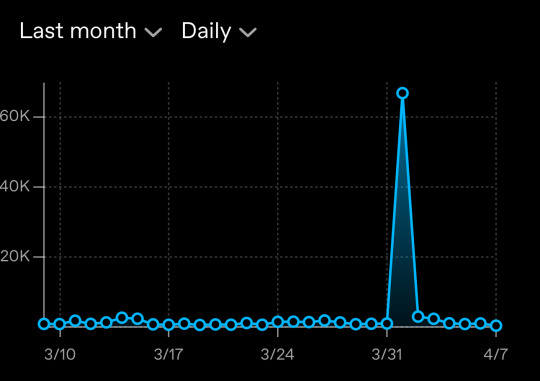
The Activity graph isn’t too clear on this point, but it looks like I had something like 65,000--hits? engagements? boops?--that day. Listen, I got the black paw badge too. We all did what we had to do in the Boopening.
A Shakespearean boop of goodly length: “And, Meowntague, come you this afternoon, to know our further pleasure in this case, to old Food-bowl, our common judgment-place.”
I had to go lie down awhile after a pun like “The Purrge.”
--
I had just gotten up from that pun and then I had to go lie down again.
Account security gothic
The Canada griffin
Dinotopia nostalgia
Two pairs of spectacles, one made from slices of emerald, and the other from slices of diamond
An old favorite: Cerberus as a puppy, guarding the gates to heck
I feel like these two posts have the same energy: Time cops will not let you travel back to the Titanic and bloodthirsty gazebos are currently in a dormancy period.
The birds are still troubled
PSA: The best sunscreens for your face
Video
A collection of various American Indian/indigenous American languages, including Navajo, Tlingit, Lakota, Colville Okanagan Salish, Cherokee, Yucatec Maya, Greenlandic, Mohawk, Yup'ik, and Mi'kmawi'simk.
A trans health-and-wellness fundraiser (Mercury Stardust, Point of Pride, and friends) kept getting banned off Tiktok due to assholes. Here’s how to donate; I saw a few “here’s how they helped me” notes, so it seems like these programs are both legit and effective.
You think you’re going to sit staring at this video because Chocolate Guy is weaving chocolate. Then you get into it, and it just keeps going.
“Too Sweet” is doing hilariously well on the charts for a song that didn’t even make the album proper. Hozier’s bees would like to thank you for your support.
I know I said that Stevie Nicks would make you sing backup on your own haunting, but late in this 1997 live performance of “Silver Springs,” she makes Lindsey Buckingham, the man she wrote this song about, look her in the eye while she belts it at him. This specific performance was released as a single (I was there, Gandalf) and nominated for a Grammy. Watch the video and you will see why.
The Women Those ‘Evolution Of Beauty’ Videos Leave Out
I don’t really know how to describe this rubberhose-style cartoon of Cab Calloway as a singing nightmare clown. Betty Boop is also there. “You just described it!” No, I really didn’t.
How movable type worked 1000 years ago, from scratch.
Unrestrained seasonal yak fun
A snowy raven photoshoot
The sacred texts
I don’t know how to explain this double Sacred Text about ominous dreams that comes with its own comic, except to say that they’re so iconic that I first saw both posts in lo-res Pinterest screencaps.
April Fool’s: The ultimate sacred text.
Personal tag of the week
Wet beast Wednesday, which had both a headshake stickflip and bears on a swan boat.
32 notes
·
View notes
Text
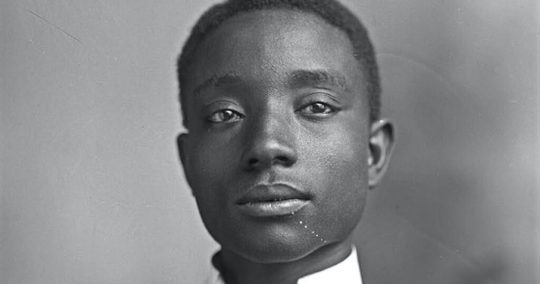
Freedmen Seek Their Fair Share of Billions of Dollars in Federal Aid and Why We Should Care/Rise UP and Support Them
By Eli Grayson Eagle Guest Writer
Eli Grayson is a Creek Citizen and unabashed supporter of the Freedmen descendants of the 5 Civilized Tribes and the 1866 Reconstruction Treaties.
This past week, we celebrated our Nation’s 244th year of Independence with family and friends over BBQ and fireworks, we should all stop to reflect on its significance, particularly in light of the Black Lives Matter (BLM) movement.
The protests that have swept the country by those outraged over the death of George Floyd, Breonna Taylor, Ahmaud Arbery, and far too many others, most of whose names have not garnered national attention, has sparked a long-overdue National dialogue about the treatment of Black Americans in the United States, a reckoning with this country’s past, the many vestiges of slavery that continue today, and what we as a country can and must do to address racism. [It also reminds ALL of us that we have a long way to go.]
Not only have the egregious deaths of George Floyd, Breonna Taylor, and Ahmaud Arbery led to a growing chorus of voices calling for criminal justice reform, it has prompted many to reflect upon racism in both its subtle and overt forms today. It has prompted many to learn about events long celebrated by Black Americans such as Juneteenth (even the NFL recently recognized Juneteenth as an official holiday). And it has prompted many to consider what steps we as individuals, and as a society, can take to affirmatively address it. Here in Oklahoma, attention has focused on Black Wall Street and the 1921 Tulsa Race Massacre.
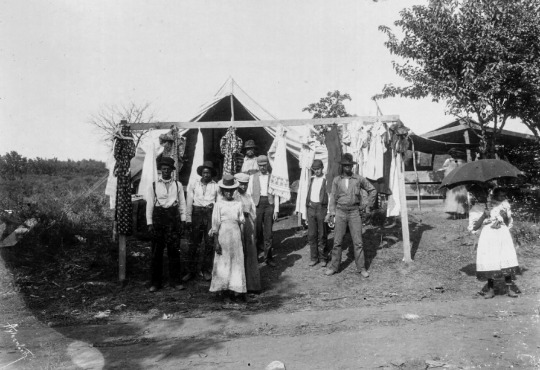
Well known is the U.S. Government’s abhorrent treatment of Native Americans, which included abrogation of countless treaties, appropriation of land, and forced removal to Western territories, including what is today Oklahoma.
Less well known, however, is the fact that the Cherokee, Chickasaw, Choctaw, Muscogee (Creek) and Seminole Nations – collectively known today as the Five Civilized Tribes – enslaved Africans. Like Southern plantation owners, they bought and sold slaves and treated them as chattel property. Indeed, slaveholding was such an integral part of the daily life of these tribal nations that each entered treaties with the Confederate States of America in 1861 to ensure its continuance.
Many Americans recently learned for the first time about the meaning and significance of Juneteenth, when nearly all remaining slaves in the United States and its territories were freed – a full 71 days after Confederate General Robert E. Lee surrendered at Appomattox on April 9, 1865 to Union forces led by General Ulysses S. Grant.
Enslaved Africans of Indian Territory
This was not the case for the enslaved Africans of Indian Territory. Even after Lee’s surrender, and even after General Granger read his Orders, the enslaved Africans of Indian Territory were kept in bondage.
Sadly, it was not until the Five Tribes of Indian Territory entered Treaties with the U.S. Government on March 21, with the Seminole Nation, on April 28, with the Chickasaw and Choctaw Nations, on June 14, with the Muscogee (Creek) Nation and on July 19, with the Cherokee Nation in 1866 – more than a year after Lee’s surrender – were these slaves granted freedom, tribal citizenship, and equal interest in the soil and national funds.
Each of these treaties (collectively known as the Treaties of 1866) contained provisions freeing the slaves and an express acknowledgement that the U.S. Constitution was, and shall remain, the Supreme Law of the land. Notably, there was no mention of tribal law or sovereignty insulating these slave holding tribes from full compliance with the U.S. Constitution, which includes all the Civil War reconstruction amendments.
Today, we find ourselves at a turning point in society. Similar to the country as a whole, the Cherokee, Chickasaw, Choctaw, Muscogee (Creek), and Seminole Nations must take this seminal moment to carefully examine their slaveholding past, their prior allegiance with the Confederacy, enshrined through Treaties entered in 1861, and how they can make amends by fully adhering to both the letter and spirit of the 1866 Reconstruction Peace Treaties.
Congressional legislation
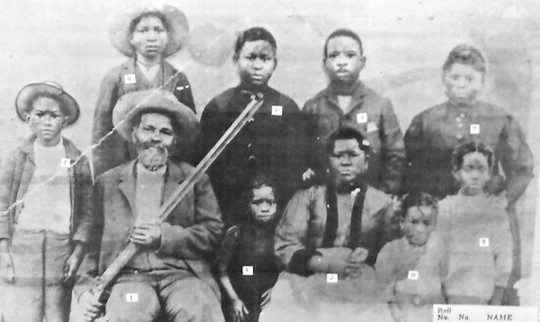
The three House bills are H.R. 2, the Invest in America Act, which includes $1 billion for the Native American Housing Block Grant Program to create or rehabilitate over 8,000 affordable homes for Native Americans on tribal lands; H.R. 6800, the HEROES Act, which includes $6 billion for housing and community development to respond to the Coronavirus; and H.R. 5319, the Native American Housing and Self-Determination Reauthorization Act (NAHASDA), which would authorize $680 million in grants to tribes in the first year and grow to $824 million in the fifth and final year.
Why is this important and why should you care? NAHASDA was originally passed by Congress in 1996 to address poor housing conditions in Indian country and last re-authorized in 2008. It is a flagship Federal law for Native American tribes and the vehicle through which approximately $650 million flows annually to the tribes. In Oklahoma, the Five Civilized Tribes receive more than $62 million annually in direct grants for housing and community development projects. These grants are based on a formula that takes into account various factors including the number of tribal members. Notably, these grants are supported by taxpayers.
For the 2021 Fiscal Year, the U.S. Department of Housing and Urban Development (HUD), which is responsible for administering NAHASDA, has informed the Five Civilized Tribes that they can expect to receive $62,223,462. Thus, nearly 10 percent of all NAHASDA grant funds will go to just these five tribes. By any measure, this is a significant sum, particularly when you consider that there are approximately 573 federally recognized tribes in the United States today, according to data from the federal Bureau of Indian Affairs. And, the final amount will be even greater as Congress has (appropriately) increased the amount of funds for NAHASDA far above the amounts requested by this Administration, including an appropriation of $825 million for this Fiscal Year.
Oklahoma Tribes receive millions in housing aid
Native American Tribes also receive other competitively awarded grants from HUD through a program known as the Indian Community Development Block Grant program. The Choctaw Nation was recently awarded $900,000 to rehabilitate 60 single-family homes while the Cherokee Nation received the same sum to construct a community building, which will house the Early Head Start program. The Chickasaw Nation was awarded $900,000 to construct a youth center in Ardmore, Oklahoma that will provide a safe and clean place for activities and services for Chickasaw tribal youth while the Muscogee (Creek) Nation will use its $900,000 award to construct a facility on the campus of the College of Muscogee Nation. The facility will include space for exhibitions and a lecture hall. These are worthy projects and it is vital that all those in need, including Freedmen descendants, can benefit.
Why Freedmen are concerned
Now if you have read this far, you must be thinking this is great news for these five tribes. And indeed, it is. However, for the Freedmen who are de facto members of the tribe, they may never see a dime of these funds if history is any guide.
Steps such as conditioning or denying the issuance of Citizenship Cards to Freedmen descendants, as well the disenrollment of Freedmen as tribal citizens, is what first led Congress in 2008 to include language in the NAHASDA re-authorization bill to link the receipt of NAHASDA housing grants to compliance with the treaty rights and benefits conferred on the Freedmen through the 1866 treaties.
That is why the efforts of House Financial Services Committee Chairwoman Maxine Waters, D-California, to fight on behalf of the Freedmen of all Five Civilized Tribes is so vital.
The committee she chairs oversees HUD and is responsible for periodically re-authorizing NAHASDA. A bi-partisan bill introduced in Congress last December would re-authorize NAHASDA. However, unlike the 2008 legislation, which contained language to prevent the Cherokee Nation from denying Cherokee Freedmen under the Act, the bill introduced by Rep. Denny Heck and co-sponsored by Reps. Scott Tipton (R-Colorado), Ben Ray Lujan (D-New Mexico), Tom Cole (R-Oklahoma), Deb Haaland (D- New Mexico), Don Young (R-Arkansas), Rep. Gwen Moore (D-Wisconsin), and Rep. Tulsi Gabbard (D-Hawaii), does not contain any protections for the Cherokee Freedmen nor the Freedmen of the other Civilized Tribes. Similarly, the version introduced in the Senate last week is devoid of such protections for the Freedmen.
Disturbed by the pattern of denying benefits to Freedmen, Chairwoman Waters is seeking assurance that descendants of Freedmen are not denied NAHASDA funds received by the Tribes. The Descendants of the Freedmen of the Five Civilized Tribes have been working to include language that would ensure that the Freedmen of all Five Civilized Tribes receive taxpayer funded NAHASDA benefits. A similar effort advanced by former House Financial Services Committee Chairman Barney Frank was successful and helped to ensure that Cherokee Freedmen received NAHASDA benefits. And in case, any question whether such protections were needed, one look only to the fact that HUD held up NAHASDA funds to the Cherokee Nation for noncompliance.
Native Americans keep fight against Freedmen
Given the harsh treatment of Native Americans at the hands of whites, one naturally would expect these Five Tribes and their supporters and defenders to be more sensitive to the plight of Freedmen who today make up more than 200,000 descendants.
The reality has been quite the opposite.
Despite knowing all this, tribal leaders and their supporters and defenders continue to maintain that such language is not needed and further argue that such language infringes upon the sovereign rights of ALL Native American tribes.
Both arguments could not be further from the truth.
Language ensuring that the Freedmen have access to federal housing benefits is urgently needed for the very reason that Freedmen have routinely been denied NAHASDA benefits for years. And let’s be clear – language we are seeking does not apply to ALL tribes, but rather only to the Freedmen of the Five Civilized Tribes.
And it does not stop at NAHASDA benefits. Freedmen have been denied tribal citizenship, benefits, and the right to vote as well. Regarding sovereignty, these are federal taxpayer dollars – as such, the federal government and, by extension, its American citizens, have a vested interest in ensuring that all tribal members, including Freedmen, benefit from the funds appropriated pursuant to NAHASDA.
If tribes feel so strongly about their sovereign right to continue to discriminate against Freedmen through denial of federally funded benefits, they can opt to refuse the funding, which would then be redistributed to other tribes. Indeed, it is the height of hypocrisy for any of the Five Civilized Tribes or their supporters to makes these arguments as they count the Freedmen when it comes to the allocation of federal housing grants from HUD yet turn around and deny those very same Freedmen from receiving such benefits.
Freedmen are equal, lawful Tribal citizens
And don’t be mistaken. While Freedmen should be treated as equal citizens under the respective 1866 Treaties, the language we are seeking to include in each of these three bills carefully avoids this ensuring Freedmen receive taxpayer housing and community development benefits on the same terms and conditions as their Native American sisters and brothers.
Indeed, in many instances, these truly are their sisters and brothers given the extensive intermixing of Freedmen and By Blood tribal members over the years. Ironically, this has resulted in some members of a family being considered by the Five Tribes as Indian and therefore citizens of the Tribe while other family members being considered by the tribe as non-Indian and therefore like black sheep.
Yet every time we make a further legislative concession and are led to believe that we are close to a final agreement on language, the Tribes and their supporters and defenders move the goalposts. Sound familiar? Yes, a sensitive issue. The Freedmen only seek to ensure that the Five Civilized Tribes comply with the Treaties of 1866.
Tribal Nations’ actions throw shade on BLM
Lastly, the Five Civilized tribes cannot have it both ways. They cannot on the one hand claim they are victims of discrimination and participate in BLM rallies yet discriminate against Freedmen by denying them suffrage and other rights of tribal citizenship under the guise of sovereignty.
And we are under no illusion that fighting this battle for justice and equality will not remain a challenge. The Five Civilized Tribes have wielded their extensive influence amongst the Nation’s 573 tribes to frame the debate and shape the position of the National tribal organizations in Washington, whom the Members of Congress look to when writing laws that affect the tribes. Adding to the challenge is the fact that the Five Civilized tribes have deployed their sizable resources to contribute to key Members of Congress with the dual purpose of keeping Americans in the dark about their slaveholding past and ensuring that these legal protections for Freedmen never see the light of day in Congress.
But just like our Nation, it is time for the Five Civilized Tribes to stand up and confront their past by taking immediate and affirmative steps to ensure that all descendants of Freedmen receive the federal housing benefits.
This they can do by supporting legislation being courageously advanced by Chairwoman Waters that would require the Five Civilized Tribes to both comply with their Treaty obligations of ensuring access to benefits for Freedmen and report on their compliance to Congress.
Featured Image (Top), Buck C. Franklin, Nashville, Tennessee, 1899, Calvert Brothers Studio Glass Plate Negatives Collection, The Tennessee State Library and Archives Blog
#Black Lives Matter for Freedmen Descendants of the Five Civilized Tribes#Black American Freedmen#Freedmen#indians#slavery
107 notes
·
View notes